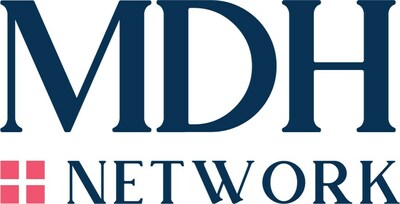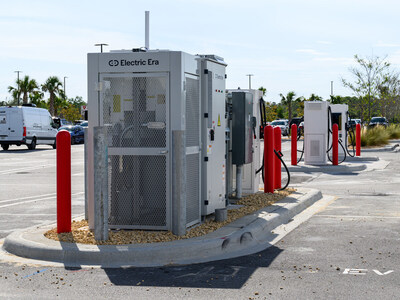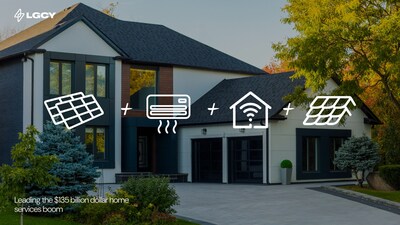BEIJING, Aug. 14, 2025 /PRNewswire/ — August’s summer heat is no match for the lively atmosphere in Yucun.
In front of a stone tablet inscribed “lucid waters and lush mountains are invaluable assets,” tourists often stop to take photos. From the village post office, vibrant rice paddies stretch all the way to the foot of the mountains, swaying in the breeze. Parents ride shared e-bikes with their children along country paths, feeling the air filled with fresh scent of bamboo and tea – this is the bucolic lifestyle many people now long for.
It’s hard to imagine that 20 years ago, this was a mining village shrouded in dust and filled with the din of quarries. From “selling ore” to “selling scenery,” to “selling lifestyle and quality,” this development path is deeply etched in the memories of residents in Yucun.
During an inspection tour to Yucun on August 15, 2005, Xi Jinping, then secretary of the Zhejiang Provincial Committee of the Communist Party of China (CPC), for the first time put forward the concept of “lucid waters and lush mountains are invaluable assets.”
Pan Wenge, who was on site for Xi’s field visit and symposium in Yucun, and later served as Yucun village Party chief, is a key witness and promoter of the concept’s inception and practice in the village. Now a member of the Party Committee at the Anji County Party School, Pan recently told the Global Times how that day changed the future of the village, as well as many people’s life trajectories.
In Volume V of the book series Xi Jinping: The Governance of China, President Xi emphasized that “I hope our whole society acts now to promote and apply the concept that lucid waters and lush mountains are invaluable assets. Through solid and sustained efforts, we will make a greater contribution to building a clean and beautiful world,” in the article titled “Promote and Apply the Concept that Lucid Waters and Lush Mountains Are Invaluable Assets.” This is Xi’s directive on the first National Ecology Day on August 14, 2023.
Today, more and more young people are travelling to Yucun, to Anji to start careers there, becoming a new generation of “two mountains” concept practitioners. The seeds planted 20 years ago are now taking root in many people’s lives, growing toward broader horizons.
A 20-Year Green Transition
On August 15, 2005, when Pan attended the symposium, he was a young official in Yucun village, and the only university graduate there. For the day, he made a trip to the county town to buy a white shirt.
At the time, Pan silently made a vow to lead Yucun onto a long-term path of green development and build a “paradise of bamboos and peach trees.”
Yucun was, in fact, under great pressure to explore economic transformation. In the 1980s and 1990s, thanks to high-quality limestone resources, the village had become the “richest village” in Anji. At its peak, Yucun boasted three mines, one cement plant, and over 100 tractors shuttling back and forth.
However, this model of “living off the mountain” came at the cost of an overexploited environment – vegetation was destroyed, air was polluted, rivers had been turned black, and pedestrians were perpetually covered in dust.
For Pan, a Yucun native, the childhood memories of peach and plum trees in front of homes and clear blue skies had long disappeared.
According to the Xinhua News Agency, in December 2002, Xi, then secretary of the Zhejiang Provincial Committee of the CPC, proposed during the second plenary session of the 11th provincial Party committee the active implementation of a sustainable development strategy, aiming to build a “Green Zhejiang.” Using the construction of an ecological province as the main vehicle, the province should strive to achieve coordinated development among the population, resources, environment, and the economy.
In June 2003, Zhejiang Province launched the “Thousand Villages Demonstration and Ten Thousand Villages Renovation” project, with the aim of comprehensively renovating ten thousand administrative villages in the province and building a thousand key villages of them into all-round well-off model villages.
Guided by the policy, the officials of Yucun village made the resolute decision to close its quarries and cement factory, and began exploring the development of ecological tourism.
On August 15, 2005, Xi visited Yucun and highly affirmed its approach. According to Xinhua, Xi noted that in the past, we said we want both lucid waters and lush mountains, and invaluable assets. In fact, lucid waters and lush mountains are invaluable assets – they themselves have value.
The proposal of the “two mountains” concept further strengthened the confidence of Yucun officials and villagers in pursuing green development. Pan recalled that in the years that followed, Yucun undertook mine rehabilitation, expanded greenery, and mobilized villagers to clean ditches, repair roads, and repaint walls, transforming the previously shabby village into public spaces resembling scenic spots.
In addition, the previously scattered household workshops and small factories were reorganized into collective businesses such as farm stays, specialty product sales, and experience-based tourism. For the first time, villagers realized that working together could also generate wealth.
Before each step was taken, Pan would clearly explain the financial and logic, striving to safeguard villagers’ interests. Though disagreements inevitably arose, the villagers’ sincerity and reasonableness helped resolve conflicts.
Yucun’s exploration ultimately paid off. The implementation of the “two mountains” concept has led to significant ecological improvement, economic growth, and social progress.
Today, in this small village of only 4.86 square kilometers, hundreds of thousands of tourists visit annually.
According to Pan, more than 100 households in the village now run their own businesses, from farm stays to specialty stores, experience centers to social media hotspots. Business is booming, popularity is rising, and with that, villagers’ incomes and life satisfaction have increased.
“After 20 years of development, mountains turned green, waters became clear, and every household has a business, with expanding range. We don’t need to leave the village to find work anymore,” said Pan Chunlin, owner of Chunlin Mountain Lodge in Yucun.
“The concept of ‘lucid waters and lush mountains are invaluable assets’ has not only significantly raised our income and happiness, but also changed the fate of several generations of our family,” he said.
Xi returned to Yucun 15 years later during an inspection tour in Zhejiang in March 2020. He said time had flown, but memories of that year were still vivid. This time, what he saw was completely different, and the vision of a beautiful countryside had become reality in Yucun. The village’s achievements prove that the path of green development is correct, and once chosen, it must be followed through.
New Generation of Practitioners
On the lawn in Yucun, frisbees arc through the air in the hands of young people. The “most beautiful” rural library has also become a popular selfie-taking spot. Further out, in Anji’s cafes, a few “digital nomads” close their laptops and make plans to stroll through the tea fields.
Today’s Anji has become a hub for young people – they work, study, and live here, turning “lucid waters and lush mountains” into a sustainable lifestyle, while becoming the new generation of practitioners of the “two mountains” concept.
One of them is young millennial entrepreneur Li Yanyi. Originally from Shanghai, she has taken root in Anji’s Xilong township since 2019, where she runs the “Anji Hood” project, a tourism integration complex based on the culture of Anji’s famous white tea. She and her team systematically revitalize old spaces, transforming abandoned structures into public venues, shops, or guesthouses, redefining rural aesthetics through a more international lens.
Unlike the traditional “build a view to attract people” model, Li focuses on building communities. She transformed an abandoned bamboo and timber factory into a multifunctional community space, launching the “DNA (Digital Nomad Anji)” project in 2021.
Programmers, designers, and creatives have moved their studios into this mountain-water setting, working remotely during the day and chatting in the fields at night. This has become a unique part of Anji’s landscape.
If we say Pan’s generation answered the era’s call to “close the mines,” then new Anji residents like Li are now exploring the question of “how to open up new ways of life.”
“For young people just out of university, Anji is a great option – it’s close to big cities, has a low trial and error cost, and offers a taste of rural life without leaving familiar circles all at once,” she told the Global Times.
“Lucid waters and lush mountains are a timeless human aspiration. As rural populations decline, the challenge is how to keep people here and how to make them want to live here,” she said.
This is also a concern for Pan. “In the past, once young people went to college, they left the countryside. Now the key is how to attract talented individuals to return and start new lives and businesses in the countryside.”
Statistics show that since 2019, over 50,000 young people have chosen to work and start businesses in Anji, gradually making it known as a “top destination for youth returning to the countryside.”
From Beautiful Villages to a Beautiful China
At the entrance to Yucun, nestled among lush greenery beside a small bridge over flowing water, a large stone bears the inscription “lucid waters and lush mountains are invaluable assets” – now one of the most iconic symbols of China’s ecological civilization efforts.
As the birthplace of the “two mountains” concept, Yucun draws in many visitors. During the Global Times’ visit, a group of faculty and students from Fujian Province’s Xiamen University were conducting a summer research program titled “Retracing the Two Mountains Path: Co-building the Ecological Circle.”
Jiang Yizhou, a master’s student from the College of Environment and Ecology at Xiamen University, told the Global Times that “we wanted to see how the past 20 years were actually lived. Traditionally, people view ecology and the economy as a seesaw – gains in one mean losses in the other. But here, we see they are not merely balanced – they are synergized. Both ecological protection and economic growth rise together, achieving a kind of decoupling.”
Today, the concept that “lucid waters and lush mountains are invaluable assets” has become a widespread consensus and shared action across society. According to Xinhua, regions nationwide are exploring various “two mountains” transformation paths. Models such as “protecting green for gold,” “aggregating green into gold,” and “leveraging green for gold” have been refined across 572 ecological civilization demonstration zones and 240 “two mountains” bases, with ecological dividends continuing to emerge.
At the post office at Yucun’s entrance, Global Times reporters saw several tourists writing postcards about their trip – on the back of each card was an aerial snapshot of a green and lush Yucun. Pan Chunlin’s “Chunlin Mountain Lodge” was welcoming a new group of guests. The students from Xiamen University took a group photo in front of the stone monument before heading to their next research destination.
When asked whether the vision he had for Yucun 20 years ago had come true, Pan raised his fist and replied, “That goal has been achieved, and I believe tomorrow will be even better!”
When the concept of “lucid waters and lush mountains are invaluable assets” transforms from the choice of one village into the choice of millions of lives, a Beautiful China comes into view.
![]() View original content:https://www.prnewswire.com/news-releases/global-times-from-mines-to-green-hills–two-generations-witness-20-years-of-chinas-ecological-development-miracle-under-two-mountains-concept-302530791.html
View original content:https://www.prnewswire.com/news-releases/global-times-from-mines-to-green-hills–two-generations-witness-20-years-of-chinas-ecological-development-miracle-under-two-mountains-concept-302530791.html
SOURCE Global Times















